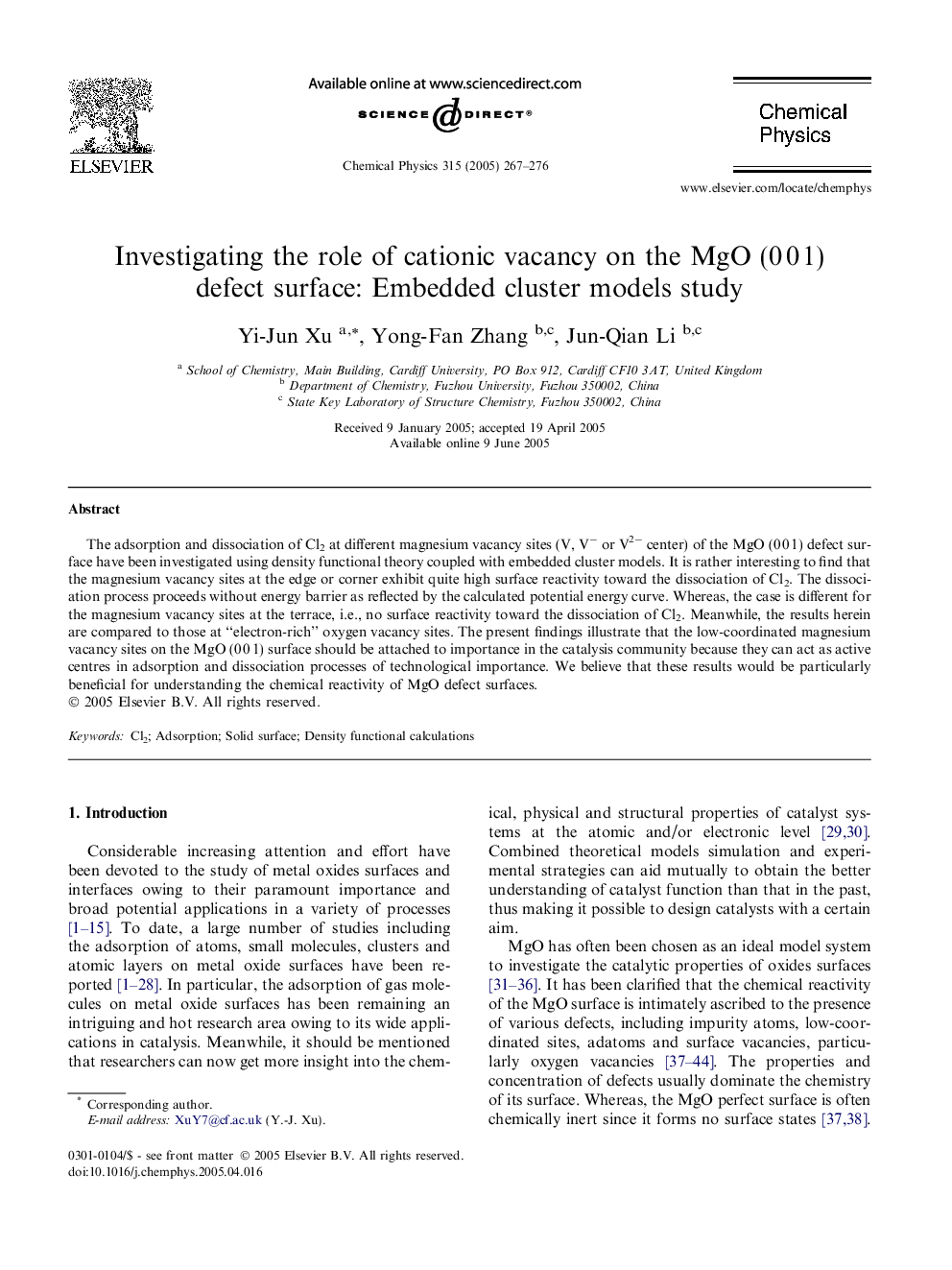| Article ID | Journal | Published Year | Pages | File Type |
|---|---|---|---|---|
| 9575201 | Chemical Physics | 2005 | 10 Pages |
Abstract
The adsorption and dissociation of Cl2 at different magnesium vacancy sites (V, Vâ or V2â center) of the MgO (0Â 0Â 1) defect surface have been investigated using density functional theory coupled with embedded cluster models. It is rather interesting to find that the magnesium vacancy sites at the edge or corner exhibit quite high surface reactivity toward the dissociation of Cl2. The dissociation process proceeds without energy barrier as reflected by the calculated potential energy curve. Whereas, the case is different for the magnesium vacancy sites at the terrace, i.e., no surface reactivity toward the dissociation of Cl2. Meanwhile, the results herein are compared to those at “electron-rich” oxygen vacancy sites. The present findings illustrate that the low-coordinated magnesium vacancy sites on the MgO (0Â 0Â 1) surface should be attached to importance in the catalysis community because they can act as active centres in adsorption and dissociation processes of technological importance. We believe that these results would be particularly beneficial for understanding the chemical reactivity of MgO defect surfaces.
Related Topics
Physical Sciences and Engineering
Chemistry
Physical and Theoretical Chemistry
Authors
Yi-Jun Xu, Yong-Fan Zhang, Jun-Qian Li,
